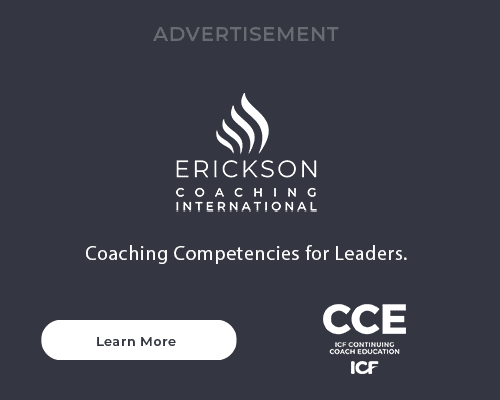From Stress to Success
For people with a desire to serve their communities, launching a career in the nonprofit sector can be incredibly rewarding. However, working for a nonprofit organization—particularly in a front-line, client services role—can also be immensely stressful.
Front-line staff in any industry are the most removed from top-line strategic decisions yet are subject to the greatest impact on their health, well-being and performance. Like their private-sector peers, front-line staff in the nonprofit setting must enhance their professional skills and expertise, build collaborative relationships with partner organizations and achieve specific targets or performance goals. However, there’s a substantial difference between reaching a sales target and achieving desired but hard-to-measure client outcomes.
As a result, for many front-line nonprofit staffers, self-care and even the cultivation of self-awareness can take a backseat to client care, resulting in a work force that may be developed professionally, but not personally.
This was the situation confronting a well-established nonprofit in the United Kingdom that had recently undergone a half-decade of significant change and growth. A central plank of the organization’s business development strategy was the continuous training and development of staff aligned with the needs of a growing business and client base.
The nonprofit approached my organization, Catalyst for Change, to launch an innovative year-long coaching program to enhance the capabilities of 28 front-line client-services staff members. The goals of the coaching initiative were to reduce workplace stress, increase resilience and job satisfaction, and improve reflective practice.
The Tools for Success
The 12-month program, designed to be conducted partially in person and partially via Skype, included just five hours of coaching per coachee, making efficient assessment a must. I provided specific tools to enable assessment of each coachee’s starting point, including a pre-coaching questionnaire, the Wheel of Life tool, and questionnaires focusing on values and learning styles.
The learning cycle assessment tool from Peter Honey and Alan Mumford’s The Manual of Learning Styles—provided to coachees prior to the start of coaching—was particularly useful. At the first session, I was able to explain how the cycle fits in with the coachee’s learning style so she was better able to understand herself. Some of the coachees I partnered with were Reflectors, but many of their job tasks required that they be in Activist mode, while others were Activists who needed to improve their Reflective practice.
During subsequent sessions, coachees learned how to use the framework to address specific issues by considering how and when they could help themselves by developing another aspect of the learning style.
Stress reduction was, by far, the No. 1 goal of coachees, so many of our conversations centered on understanding whether individual sources of stress were within or outside their control. We used the concept of comfort zones (shown above) to discuss stressful situations, partially to measure degrees of discomfort, but also to offer a new perspective on stress.
Not only did coachees using this technique find that it gave them greater control over stress, they were also able to recognize the benefits of being in the stretch zone (where development happens), and even put themselves into situations that moved them into the stretch zone.
Early in the engagement, it became clear that coachees were also plagued by concerns around time management; indeed, poor time management was also a contributor to both workplace stress and subpar performance.
The use of Stephen Covey’s time management matrix invited important conversations about coachees’ stewardship of their time and energy. By making minor adjustments in their workflow (e.g., completing demanding tasks when energy is at its highest and accomplishing routine items, such as expense reports or inbox management, when energy levels were lower), coachees found they were able to complete a higher volume of work while feeling more in control.
The Power of “No”
Although all of the coachees were experienced and proficient in serving as the voices for their clients, they would often keep quiet about their own needs and limitations. As such, many of our coaching engagements focusedon understanding the power of the word “no,” and recognizing that it isn’t always an outright refusal to do something: It’s simply a way to put yourself in control of when you do something and give yourself a louder voice in your personal and professional life. Not surprisingly, when coachees leveraged the power of “no,” their self-confidence increased, their stress levels dropped further and their grasp on work/life balance improved.
Passing it On
A shortcoming of the coaching program was that it wasn’t grounded in pre- or post-coaching data. Collecting metrics around employee stress (e.g., absenteeism, citations of stress as a reason for leaving during exit interviews) would have enabled a greater understanding of what caused employee stress and greater facility for evaluating the ROI of coaching.
Despite the absence of hard data on the organizational level, pre- and post-coaching questionnaires administered to coachees revealed the high ROE of coaching, with coachees reporting decreased stress, improved time management, enhanced work/life balance and positive career progression as outcomes of coaching.
In a post-coaching testimonial, the organization’s CEO wrote that the coaching was “well-received and had lasting effects in relation to staff’s ability to reflect on their practice and communicate effectively with management. As managers, we have also learned from the experience, especially about the value of investing in staff development and listening to the voice of practitioners.”
In addition to increased personal and professional effectiveness, many coachees reported that they were able to “pay it forward;” i.e., to apply the tools and techniques they acquired through coaching in conversations with their own clients to help improve their quality of life, demonstrating the ripple effect of coaching and its ability to effect genuine change in our communities and in the world.



